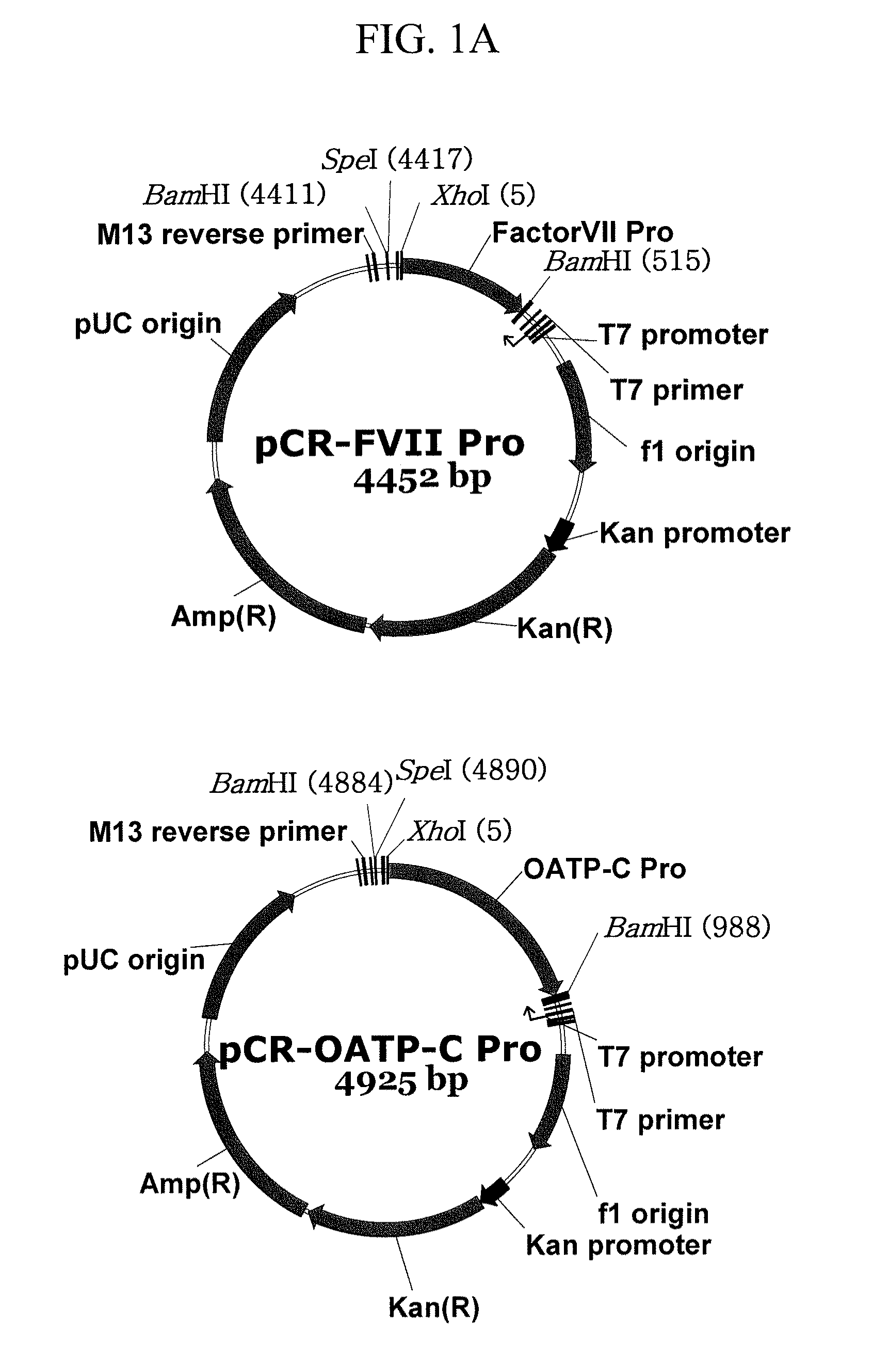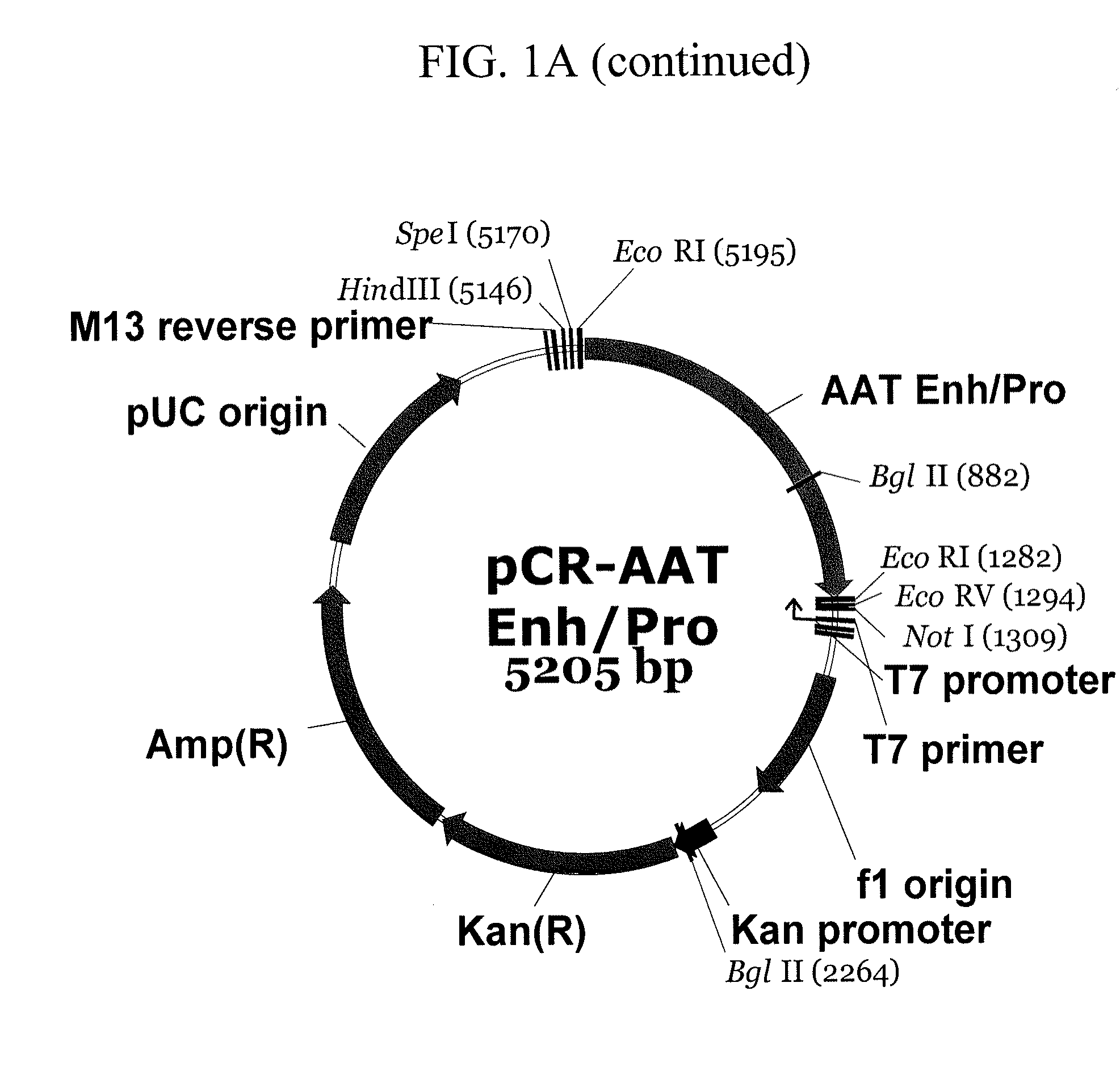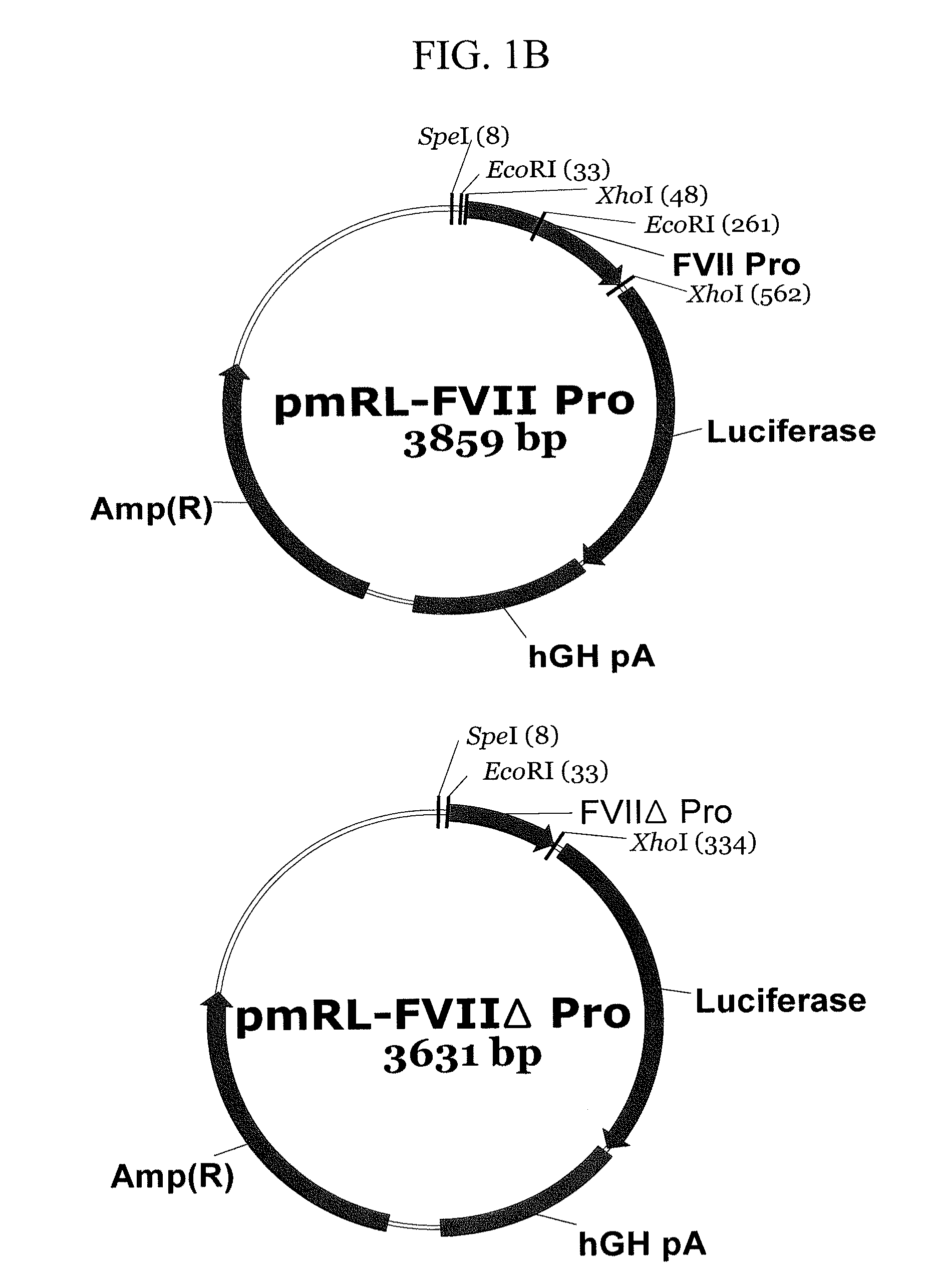Expression vector suitable for expression of a coding sequence for gene therapy
a technology of expression vectors and gene therapies, applied in the field of expression vectors for gene therapy, can solve the problems of transient and not sustained expression level of hfix in human subjects
- Summary
- Abstract
- Description
- Claims
- Application Information
AI Technical Summary
Benefits of technology
Problems solved by technology
Method used
Image
Examples
example 1
Isolation and Activity Analysis of Liver Tissue-specific Expression Promoters and Enhancers
Isolation and Activity Analysis of Liver Tissue-Specific Expression Promoters
[0108]Genomic DNA was extracted from a cell lysate of human liver cell line (Chang cells) by using a DNeasy Tissue Kit (Qiagen). In order to isolate a FVII promoter, PCR was performed using the genomic DNA as a template, a primer set of SEQ ID NOS: 1 and 2, and DNA polymerase (Ex-Taq, Takara) to obtain a DNA fragment having the nucleotide sequence of SEQ ID NO: 41. Specifically, PCR was carried out under the following conditions: initial denaturation at 94° C. for five minutes; 30 cycles of denaturation at 94° C. for 30 seconds, annealing at 56° C. for 30 seconds and extension at 72° C. for one minute; and final extension at 72° C. for three minutes. The PCR products were purified by gel extraction and inserted into a pCR2.1-TOPO plasmid vector. The FVII promoter having the nucleotide sequence of SEQ ID NO: 41 was id...
example 2
Isolation of UTRs of hFIX and Introns of Liver-specific Genes, and Analysis of Gene Expression Efficiency by UTRs and Introns
Identification of UTRs of hFIX, and Construction of Expression Vectors Including UTRs
[0128]1.2 mg of total RNA was extracted from 1 g of a human liver tissue, which was previously homogenized with a homogenizer, using a RNA extraction kit (Pharmacia Biotech). A single-stranded DNA was synthesized using the extracted RNA as a template, an M-MuLV reverse transcriptase (Takara) and oligo-dT17 primers (Takara), and a double-stranded cDNA was synthesized from the single-stranded DNA using DNA polymerase I (Takara).
[0129]In order to evaluate the effect of FIX UTR on gene expression efficiency, PCR was performed using the cDNA as a template, a primer set (SEQ ID NOS: 11 and 12) designed from a nucleotide sequence of FIX (Genbank accession No: NM000133) and Ex-Taq to obtain FIX cDNA including 5′UTR (SEQ ID NO: 62) and 3′UTR (SEQ ID NO: 63). The PCR condition was as f...
example 3
Isolation of Liver-specific LCRs and Analysis of Gene Expression Efficiency by LCRs
Isolation of Liver-Specific LCRs and Construction of Plasmid Vectors Including LCRs
[0158]The positions of the TGTTTGC motif was analyzed in the downstream of α1-antitrypsin, α-fetoprotein and albumin genes expressed only in the liver tissues. The results are shown in FIG. 10.
[0159]As shown in FIG. 10, seven TGTTTGC motifs are distributed at −7.8 kb site of α1-antitrypsin gene, six motifs being in a forward orientation and one motif being in a reverse orientation, and one motif is located in a forward orientation at −108 bp site of α1-antitrypsin gene. At −3.8 kb site of α-fetoprotein, two TGTTTGC motifs are distributed in a forward orientation and one motif is in a reverse orientation and at −6 kb site of albumin gene, one motif is located in a reverse orientation. In addition, TGTTTGC motifs are clustered at −800 bp site of the α1-antitrypsin gene, −1.5 kb and −500 bp sites of the α-fetoprotein gene...
PUM
 Login to View More
Login to View More Abstract
Description
Claims
Application Information
 Login to View More
Login to View More - R&D
- Intellectual Property
- Life Sciences
- Materials
- Tech Scout
- Unparalleled Data Quality
- Higher Quality Content
- 60% Fewer Hallucinations
Browse by: Latest US Patents, China's latest patents, Technical Efficacy Thesaurus, Application Domain, Technology Topic, Popular Technical Reports.
© 2025 PatSnap. All rights reserved.Legal|Privacy policy|Modern Slavery Act Transparency Statement|Sitemap|About US| Contact US: help@patsnap.com



